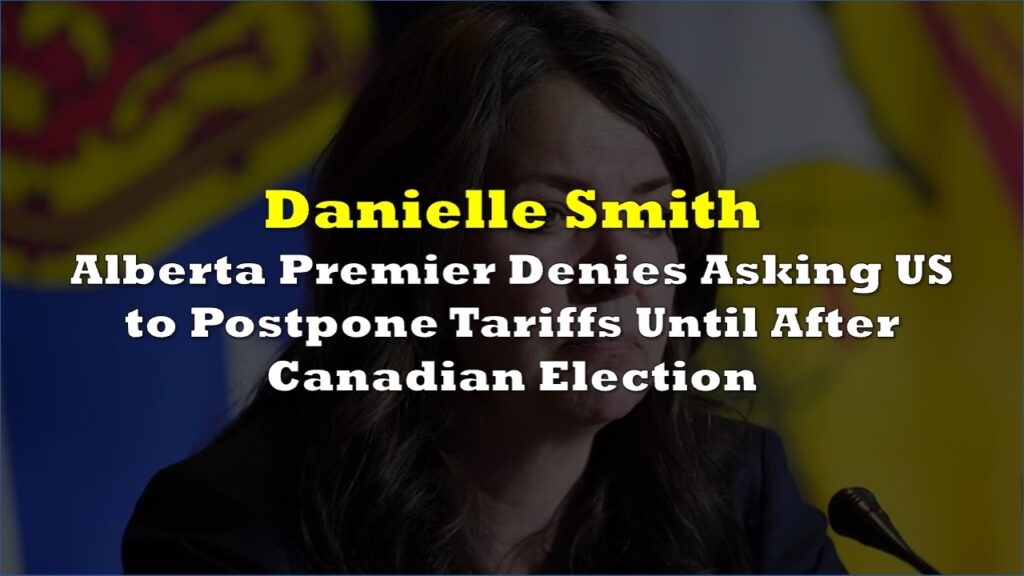The governments of Alberta, Saskatchewan, and Manitoba have finally inked a memorandum of understanding (MOU) to explore the construction of a deep water harbor at Port Nelson on the Hudson Bay. The primary aim of this project is to facilitate the export of valuable natural resources such as potash and liquefied natural gas (LNG).
Premier Danielle Smith, accompanied by Transportation and Economic Corridors Minister Devin Dreeshen and counterparts from Saskatchewan and Manitoba, announced the agreement in Calgary on Monday. While awaiting final approval, the MOU signifies a significant step forward after years of starts and stops.
To establish a rail right-of-way and utilities lines connecting Alberta to Port Nelson, the three provinces will collaborate and contribute resources for geotechnical studies and other necessary investigations. Overseeing the work will be NeeStaNan— meaning ‘all of us’, a First Nations-owned corporation representing local communities along the route.
Smith, speaking at the Global Energy Show, emphasized the MOU’s significance in breaking down regulatory barriers and fostering partnerships with First Nations. She expressed optimism about the potential of this project, highlighting the possibility of it serving as a model for similar corridor initiatives in the future.
“The fact we have three provinces that are prepared to clear away some of thee regulatory bottlenecks, working with First Nations partners, that to me has the potential to be the model for other types of corridor projects we’d like to work on,” she said.
It was so great to see @PremierScottMoe and industry leaders at the Global Energy Show in Calgary.
— Danielle Smith (@ABDanielleSmith) June 14, 2023
Demand for Alberta’s energy will continue for decades to come. Our industry will continue to find innovative ways to reduce emissions, while providing the energy the world relies… pic.twitter.com/vnlVktY7kq
Saskatchewan Premier Scott Moe, present in Calgary on Monday, has long been a staunch supporter of the deep water harbor concept. In 2020, his government established a committee to examine proposals for export pipelines, including Churchill. Moe reiterated his backing in 2022, while Manitoba Premier Heather Stefanson initially hesitated but has now firmly joined the initiative, as confirmed by Smith.
The concept of a utility corridor to Hudson’s Bay has been discussed for decades, gaining renewed urgency after the washout of the railway to the Port of Churchill in 2017. Initially focused on oil pipelines, the corridor’s scope has expanded to encompass multiple commodities such as potash, LNG, grain, power lines, and timber exports. Furthermore, it could potentially link with Ontario’s “Ring of Fire” mining region, fostering development opportunities.
The idea gained significant momentum following Russia’s invasion of Ukraine and the subsequent energy crisis in Europe. Interestingly, it has even garnered support from Prime Minister Justin Trudeau, who, along with German Chancellor Olaf Scholz, signed a joint declaration last summer to explore shipping hydrogen and LNG to Europe. Port Nelson’s proximity to Liverpool and Rotterdam, compared to the Port of Montreal, makes it an attractive option.
Unlike the original proposal centered around Churchill, the current proponents are now championing Port Nelson due to its more favorable location further south. The harbor is ice-free for most of the year and has been operational since 1915. The terrain for a railroad is more stable, and expanding the existing jetty is a more viable option.
The NeeStaNan proposal envisions integrating the rail line with a trucking hub in Winnipeg, allowing seamless connections to the existing NAFTA highway network for imports and exports, bolstering trade opportunities.
While the construction of this corridor undoubtedly comes with a significant price tag, estimated at up to $50 billion, Robyn Lore, a prominent supporter of NeeStaNan, argues that the economic benefits far outweigh the costs. According to Lore, Canada, particularly the three western provinces, lost a staggering $80 billion in potential benefits from LNG exports in just the past 18 months.
Information for this story was found via Alberta Report and the sources mentioned. The author has no securities or affiliations related to the organizations discussed. Not a recommendation to buy or sell. Always do additional research and consult a professional before purchasing a security. The author holds no licenses.










4 Responses
This would be very beneficial for the Canadian economy. We are one of the most environmentally friendly energy producers worldwide. That is the kind of industry that countries should be sourcing their energy needs from. It is extremely unfortunate we were unable to support the European energy market, instead they had to look to the Russians….
Little chance it actually makes it past the drawing board
This should have happened years ago.
Yeah good idea long overdue.